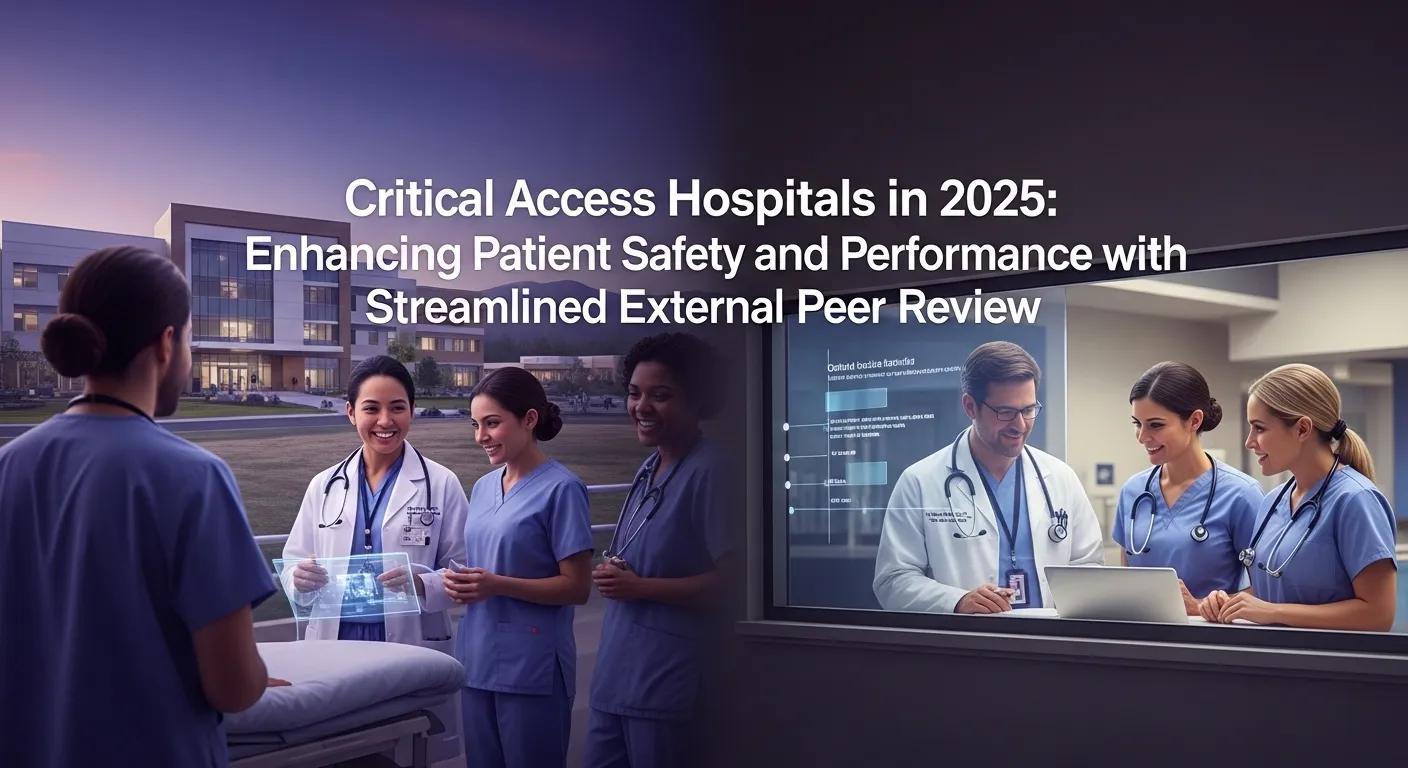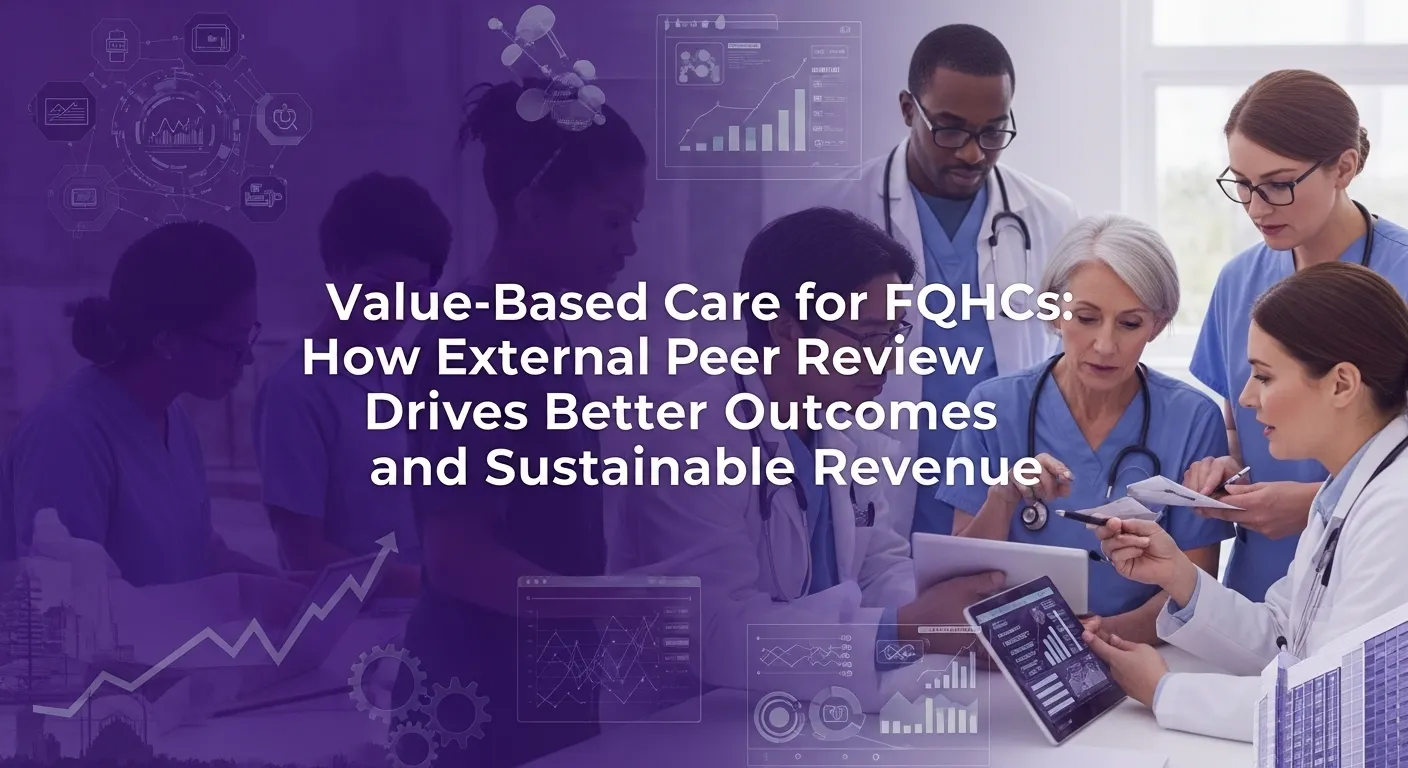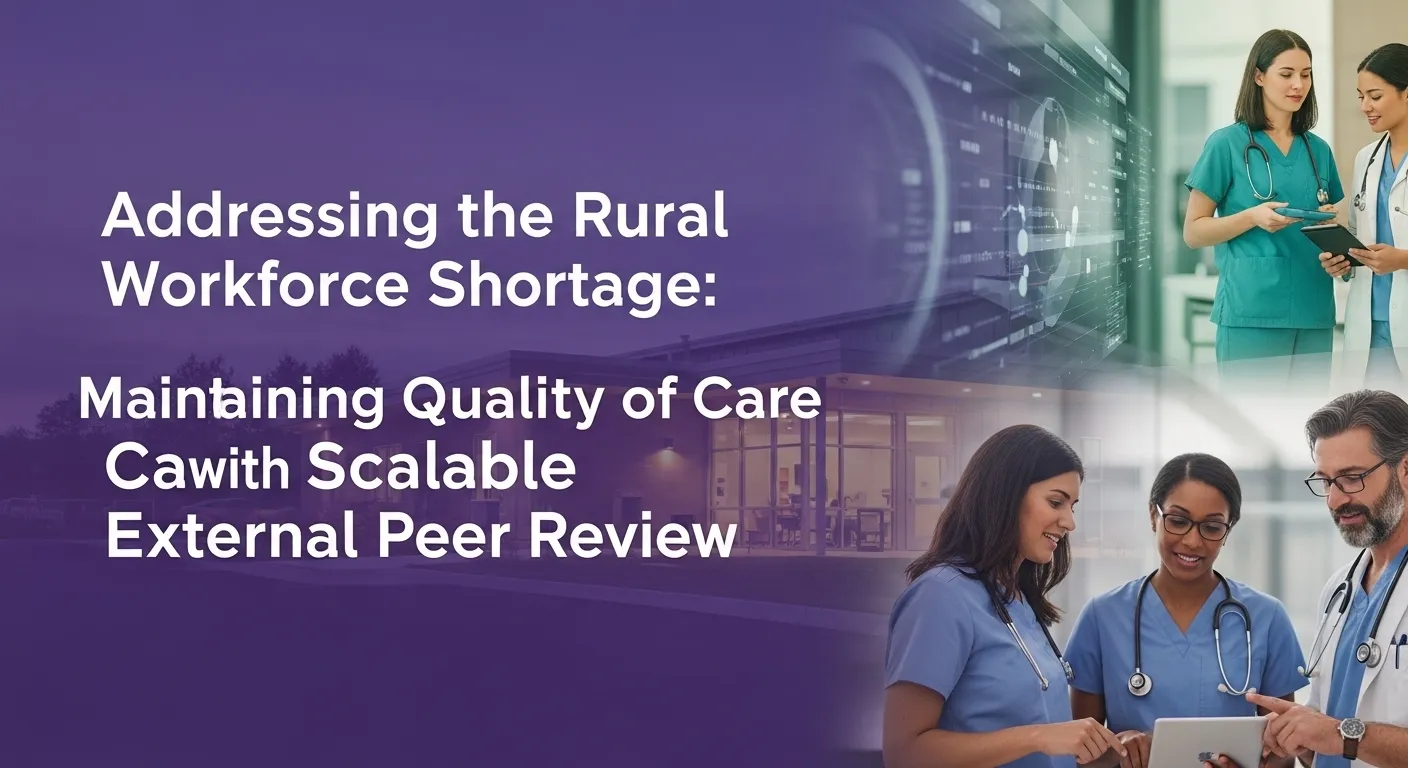

Critical Access Hospitals in 2025: Enhancing Patient Safety and Performance with Streamlined External Peer Review
CAHs face unique peer review challenges. External services like Medplace offer objective expertise, streamline compliance, and boost patient safety, provider satisfaction, and grant competitiveness.
Critical Access Hospitals (CAHs) serve as vital anchors in rural communities, providing essential healthcare services with limited resources. In 2025, the imperative to deliver high-quality, safe patient care while navigating complex regulatory landscapes remains paramount. While peer review is a cornerstone of quality assurance, the unique operational realities of CAHs often transform this critical process into a significant administrative burden and a source of internal challenges.
Effective peer review is not just a regulatory checkbox; it's a proactive strategy for improving patient outcomes, fostering professional development, and mitigating risk. For CAHs, however, achieving this ideal can be particularly complex. This article explores how embracing streamlined external peer review can empower CAHs to elevate their quality oversight, ensuring both compliance and superior patient care.
The Unique Peer Review Challenges for Critical Access Hospitals
CAHs operate under specific constraints that can make traditional, internal peer review models difficult to sustain and truly effective. These challenges often lead to review processes that are slow, inconsistent, and potentially biased.
Internal Limitations and Potential for Bias
- Shortage of Internal Reviewers: Smaller staff sizes mean fewer qualified professionals are available to conduct reviews, leading to burnout or incomplete assessments.
- Lack of Specialty-Matched Reviewers: CAHs often have generalist practitioners; finding internal peers with subspecialty expertise for nuanced case reviews is often impossible.
- Risk of Internal Politics and Bias: In close-knit environments, personal relationships can inadvertently influence review objectivity, leading to inconsistent standards or reluctance to provide critical feedback.
- Administrative Overload: Manual processes, scheduling difficulties, and a lack of dedicated personnel can overwhelm administrative staff, diverting resources from direct patient care.
Navigating Compliance and Audit Risks
Compliance is non-negotiable for CAHs. Regulatory bodies like HRSA, TJC, and CMS conduct rigorous site visits and audits, scrutinizing peer review documentation intently. Subpar or inconsistent reviews can flag an organization for deficiencies, impacting funding, accreditation, and community trust. The administrative burden of preparing for these audits, often with limited resources, adds another layer of stress for leadership.
How External Peer Review Transforms Quality Oversight for CAHs
External peer review offers a powerful solution, addressing the inherent challenges faced by CAHs by bringing in fresh perspectives, deep expertise, and efficient processes.
Objectivity and Expertise at Your Fingertips
- Eliminates Internal Bias: External reviewers provide impartial assessments, free from internal politics or personal relationships, ensuring fairness and consistent application of standards.
- Access to Subspecialist Reviewers: Services like Medplace connect CAHs with board-certified subspecialists across various disciplines. This ensures that even the most complex cases receive an accurate and defensible review, enhancing both patient safety and the learning experience for the reviewed provider.
- Improved Accuracy and Defensibility: High-quality, expert reviews lead to more precise identification of care gaps and provide a stronger defense against potential legal challenges.
Streamlined Processes and Administrative Relief
- Digitally Streamlined Systems: Modern external peer review platforms reduce administrative burden by automating submission, tracking, and reporting. This frees up valuable staff time, allowing them to focus on core patient care initiatives.
- Faster Turnaround Times: Timely completion of reviews (often less than two weeks with Medplace) ensures that feedback is actionable and patterns can be addressed proactively, rather than reactively.
- Comprehensive and Actionable Reports: Medplace reports include clear yes/no/NA scorecards, detailed deficiency comments, overall summaries, and actionable recommendations, making it easier for CAH leadership to understand findings and implement improvements.
Tangible Benefits for CAHs: Beyond Compliance
- Improved Provider Satisfaction and Retention: Providers engage more positively with objective, high-quality reviews conducted by qualified peers. This fosters a culture of professional growth and reduces feelings of targeted criticism, contributing to higher provider morale and retention—a critical factor for CAHs.
- Reduced Legal and Compliance Risk: Proactive identification of practice patterns and thorough, defensible documentation minimizes legal exposure and demonstrates a robust commitment to patient safety during audits.
- Enhanced Grant Competitiveness: Strong, well-documented peer review metrics can be leveraged in applications for vital HRSA grants and other funding opportunities, showcasing a commitment to continuous quality improvement.
- Demonstrating Excellence: High-quality external reviews provide clear evidence of a CAH's dedication to clinical excellence and patient safety, strengthening its reputation within the community and among referring networks.
- Preventive, Pattern-Based Insights: Moving beyond incident-based reviews, external services can identify systemic issues or patterns of care that require intervention, shifting peer review from reactive to truly preventive.
Partnering with Medplace: A Strategic Investment
For Critical Access Hospitals, adopting an external peer review partner like Medplace is more than just outsourcing a task; it's a strategic investment in patient safety, quality outcomes, and organizational resilience. Medplace saves valuable staff time, significantly improves documentation quality, ensures adherence to compliance standards, and drastically reduces the administrative burden on your team.
To help leadership and finance stakeholders understand the tangible financial and operational benefits, Medplace offers an ROI Calculator, providing a clear justification for this essential shift.
Conclusion
In 2025 and beyond, the success of Critical Access Hospitals hinges on their ability to deliver exceptional care efficiently and compliantly. External peer review offers a transformative path forward, enabling CAHs to overcome unique challenges, enhance patient safety, and strengthen their operational foundation. By embracing objectivity, expertise, and streamlined processes, CAHs can ensure their quality oversight is not just compliant, but truly excellent, paving the way for a healthier future for their communities.

Mitigating Risk in Tribal Health: Proactive Patient Safety with Culturally Competent External Peer Review
External peer review offers Tribal Health Organizations unbiased, culturally competent assessments, reducing administrative burden, improving patient safety, and strengthening compliance documentation.
.png)
.png)

Value-Based Care for FQHCs: How External Peer Review Drives Better Outcomes and Sustainable Revenue
Medplace external peer review helps FQHCs thrive in value-based care. Gain objective insights, cut compliance risk, reduce admin burden, and boost quality, provider satisfaction, & revenue.
.png)
.png)

Addressing the Rural Workforce Shortage: Maintaining Quality of Care with Scalable External Peer Review
Combat rural healthcare shortages and maintain quality with scalable external peer review. Medplace offers objective, specialty-matched reviews, reducing burden and ensuring compliance.
.png)
.png)



.png)
.png)
.png)


.png)




.png)